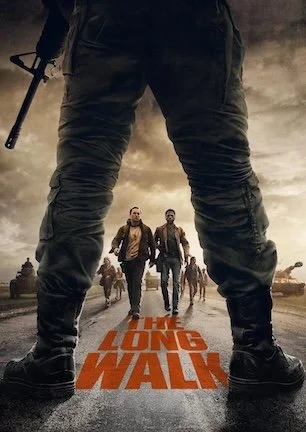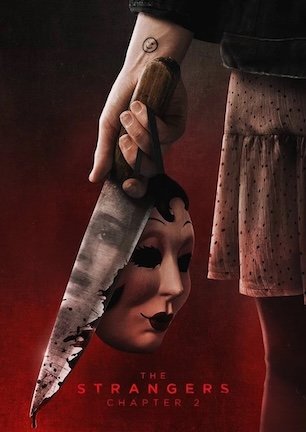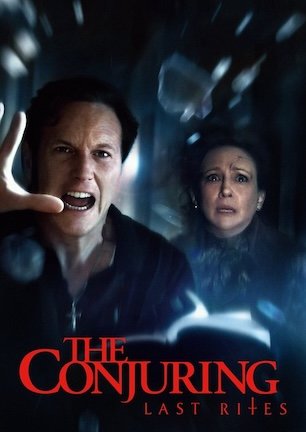Studio: Scream Factory
Director: Charles E. Sellier Jr.
Writer: Michael Hickey
Producer: Ira Richard Barmak
Stars: Lilyan Chauvin, Gilmer McCormick, Toni Nero, Robert Brian Wilson, Charles Dierkop, Linnea Quigley, Randy Stumpf, Britt Leach, Tara Buckman, Will Hare
Review Score:
Summary:
Having witnessed his parents’ violent murders as a boy, ongoing trauma triggers an orphan into becoming a murderous Santa Claus as an adult.
Review:
Due to mounting pressure from widely publicized protests, controversial cult classic “Silent Night, Deadly Night” was infamously pulled from theaters after playing for only two weeks in November 1984. That would have made me ten years old when the movie debuted on home video the following year. (I couldn’t corroborate if the film first hit VHS in the US in 1985, 1986, or later, but 1985 makes the most sense for this memory.)
I remember an older family friend rented “Silent Night, Deadly Night” and brought it over to my house to watch, which wasn’t an uncommon occurrence. He usually brought tapes like “The Breakfast Club” or other comedies and we’d often watch them with my mom. Sometimes, when only my sister was home, the movie du jour would go in a different direction, which is how I saw Wes Craven’s “The Last House on the Left” at an age when I probably shouldn’t have. But that’s a tale for another time.
On this particular night, it happened to be my father who was home. My early love of horror wasn’t discouraged. My parents were pretty cool about it, typically concerned more about nudity than violence, and let me watch virtually anything on TV, including syndicated broadcast cuts of films like “Halloween” and “The Texas Chain Saw Massacre.” So my dad didn’t reject the idea of me watching a ‘Killer Santa’ movie, though he did stay in the room for the screening.
Every longtime fright film fan has a similar story of an ‘awakening’ such as the one I was about to experience. When the chilling opening of a cherubic child’s a capella Christmas carol was interrupted by animated blood splashing a wreath while composer Perry Botkin smashed piano keys with a ham fist, I instinctively knew I needed to pay attention. By the time five-year-old Billy received mentally deranged grandpa’s truly disturbing warning, made additionally frightening by the fact that my own grandmother was afflicted with dementia at the time, I sat still in terrified excitement. “Silent Night, Deadly Night” was seeping into my impressionable skull like no other horror movie had.
We made it as far as Charles Dierkop’s Santa shooting Billy’s dad in the head, then pinning his mom to the pavement and tearing open her blouse, when my dad responsibly and rightfully said, “I don’t think Ian should be watching this.” In that subsequent moment when the videocassette was ejected from the VCR, “Silent Night, Deadly Night” vaulted to legendary status. Now it was a token of taboo entertainment, a white buffalo to be hunted down, hidden in a book bag and watched in secret at some sleepover down the line. I had only seen 12 minutes of the movie, and that was supposedly too hot for my head to handle. What wicked wonders must the other 73 have in store?
My fascination with “Silent Night, Deadly Night” being a dangerous and thus “must see” movie didn’t end there. Additional roadblocks frustrated me from seeing the full film for some time, though I’ve already gone on long enough and won’t elaborate with additional anecdotes, other than to mention that I still sometimes mutter, “where are you ya little bastard?” when searching for a missing sock.
The real reason why this review opens with a personal recollection is to reinforce how “Silent Night, Deadly Night” is deeply rooted in nostalgia for those of us who recall its release. No child of the 1980s can look at Billy’s toy store montage and not lust after that full shelf of Jabba the Hutt playsets or vintage Ben Cooper Halloween costumes. But even if you came of age long after, the film still connects as a dark Christmas classic due to its thick throwback slasher tones.
Scripter Michael Hickey admits to never having seen a slasher movie before writing his script. Charles Sellier never directed a movie prior to this project. Sellier was previously known primarily for producing odd documentaries and “The Life and Times of Grizzly Adams.” Robert Brian Wilson auditioned as a lark, having no preexisting ambition to become an actor. There’s no reason why “Silent Night, Deadly Night” should work. Truthfully, many of its individual parts don’t.
Forget about unflattering portrayals of Catholic nuns and Christmas icons as being the most offensively objectionable content. “Silent Night, Deadly Night” contains two violent sexual assaults, as well as three additional sex scenes, covering the T&A quotient through highly questionable taste.
Hickey’s hard-to-swallow story works overtime to show how Billy’s switch got flipped. The poor orphan never stands a chance given how hard everyone in his life works, inadvertently for the most part, to convert him into a killer Claus.
Still, having a distinct character progression arc is more than many slashers can boast. Then again, a solid chunk of the film features no story at all, with Billy just cutting down random victims in traditional fright flick fashion for a full 20 minutes.
Then there is unintentional silliness. Some of it comes from spotty acting. More of it comes from questionable casting, e.g. the obvious adults portraying sledding teens or the mismatched faces on every male playing Billy or Ricky at various ages. Don’t forget the funky pool table love theme that sounds as if it were sung by a “Schoolhouse Rock” vocalist.
Yet when all of the above is swirled into the same stew, you get something akin to the creation of Frosty the Snowman, where jumbling a corncob pipe, silk hat, and coal somehow births a sentient lifeform made just as much from serendipitous magic. Sincerity seethes everywhere, granting permission to take absurdity seriously.
“Silent Night, Deadly Night” is cheesy and sleazy, but still supremely terrifying because of its unique texture. Memorable kills (sledding decapitation and deer antlers), memorable lines (“naughty!”), memorable songs (“Warm Side of the Door”); what doesn’t the movie stuff in your stocking?
It’s a really close call, and the title often changes hands depending upon which classic is freshest on the mind. But for now at least, I’ll award the edge to “Silent Night, Deadly Night” over Bob Clark’s “Black Christmas” (review here) as the greatest holiday horror film of all-time.
Review Score: 90
Scream Factory Collector’s Edition: Even if you don’t score one of the deluxe sets that comes with NECA’s Billy action figure, you’ll still have two discs of entertainment encased in handsome new art. Should you miss the classic image of Santa’s ax-wielding arm craning out of a chimney, don’t worry. Reversible artwork allows you to flip the slip to your preferred cover.
Disc One: The 79-minute theatrical version features a NEW HD transfer from the original camera negative. Also included here is the theatrical trailer as well as radio and TV spots.
Disc Two: Scream Factory knows you’ll probably only watch the theatrical cut once, if at all, so the bulk of the bonuses are on this second disc, which features the 85-minute unrated version. The unrated cut also comes from the NEW HD transfer, however the reinserted six minutes are in standard definition. That’s as good as it is going to get though, as the original source for those scenes is long lost.
NEW Audio Commentary with actor Robert Brian Wilson and co-executive producer Scott J. Schneid: Justin Beahm moderates a discussion between Wilson and Schneid that only occasionally references what is happening onscreen and repeats several stories recalled in the “Making Of” featurette. There are some fun recollections and revelations, but Schneid wasn’t on set and Wilson doesn’t remember a whole lot about the experience, making their musings a little lukewarm.
Audio Commentary with writer Michael Hickey, composer Perry Botkin, co-executive producer Scott J. Schneid, and editor/second unit director Michael Spence: When you’re ready for one more trip through SNDN, the audio commentary recorded for a previous home video release reappears here for an encore.
NEW Slay Bells Ring – The Story of Silent Night, Deadly Night: When I attended the SNDN 30th anniversary screening at Hollywood’s Egyptian Theatre in 2014, co-executive producers Scott J. Schneid and Dennis Whitehead dished a surprising amount of dirt during the Q&A. I had the sense they seemed miffed at crediting Paul Caimi for SNDN’s story when they only took a one-sentence idea from his “He Sees You When You’re Sleeping” script. And I’d swear I remember hearing that the divisive wall eventually erected between them and producer Ira Richard Barmack resulted in Schneid and Whitehead being barred from the set.
But Schneid and Whitehead only touch on those relationships in broad strokes. This 45-minute retrospective is more of a wistful peek back at the making of the film, told entirely through talking heads and clips, no behind-the-scenes footage or photos. The closest thing to contention comes when second unit director Michael Spence recalls how much he enjoyed crafting Officer Barnes’ death scene. Meanwhile, scripter Michael Hickey laments the spontaneously shot scene’s inclusion, which isn’t a surprise since he didn’t write it. FWIW, I agree with Hickey that this sequence slows down the climax.
Deep insight doesn’t come into play, though everyone’s overall positivity throughout their recollections makes for an enjoyable watch. Actor Robert Brian Wilson and composer Perry Botkin also appear for new interviews over the course of this piece.
Oh Deer! An Interview with Linnea Quigley: This inclusion isn’t listed on the back of the box, though the box does mention Quigley being featured in “Slay Bells Ring,” which she is not. Either the person who wrote the blurbs goofed or perhaps Scream Factory didn’t want to call this one out too loud due to its low quality video. This interview has a 2017 copyright date, which may or may not be when it was recorded. Either way, it looks like it was shot with a VHS camera from 1997.
At 22 minutes, Quigley’s interview runs 5x longer than her single scene in the film. While her deer antler death is undeniably iconic, it’s odd that Quigley became so associated with SNDN when there isn’t much to her part. Nevertheless, she is asked to describe her character in detail, as if there is real substance to the role. Quigley also digs into details regarding how she broke into the business as well as her brief time spent in Utah shooting the movie.
NEW Christmas in July - Silent Night, Deadly Night Film Locations Then and Now: As someone who regularly visits Freddy Krueger’s house and the “Halloween” exteriors here in Los Angeles, I’m a big fan of ‘What They Look Like Today’ filming location tours. But this is a short 10-minute trip you’ll only take once, if for no other reason than SNDN doesn’t have notable landmarks so much as memorable moments, and beige buildings look alike whether it is 1984 or 2017.
A vacant field exists where the orphanage once stood and Ira’s Toys is now a gym. Outside of that, this non-narrated segment (only onscreen text identifies locations) recreates a number of countryside vista establishing shots that largely seem the same. Several houses are also shown, though there evidently wasn’t permission to film inside them, or permission at all, as one house’s porch is covered in a full fire hazard’s worth of the current resident’s rubbish. Still, credit goes to the video’s creator(s) for duplicating many camera angles exactly and juxtaposing original film footage for nicely-framed composites.
Audio Interview with Director Charles E. Sellier Jr.: SNDN director Charles Sellier passed away in 2011, yet preserved here is a 2009 interview conducted by Wes Vance for Deadpit Radio. At nearly a full hour, Sellier gets rambly, particularly when unnecessarily recounting the entire SNDN plotline in detail. But there are a few humorous tidbits of trivia involving everything from Linnea Quigley’s underwear, or lack thereof, to Charles Dierkop unexpectedly attempting to play Killer Santa with an Irish accent.
Santa’s Stocking of Outrage: If you make it all the way through this collection of dissolving still frames featuring choice quotes from people who complained about SNDN, you’re a more patient person than I. For diehard devotees of the 1984 controversy only, and supplemented with an additional Poster and Still Gallery rounding out the Special Features.






It assumes everyone watching must be a dimwit too dense to understand how the most basic storytelling concepts work.